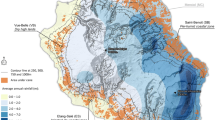Summary
A variety must be distinguishable, uniform, stable and of sufficient productivity to be officially registered. In Italy landraces of lucerne are still widely used because they are characterized by a good persistence and productivity in their area of origin and adaptation.
The landrace from Casalina (20 km south of Perugia, Central Italy) has higher dry matter production than many other commercial cultivars. The objective of this paper was to measure the variation of the landrace Casalina and compare it with that of the commonest cultivars available on the market and with some lines selected from the landrace Casalina.
The experiment consisted of 11 entries: Casalina, two selections from Casalina (one for high seed yield and one for frequent cuttings), the registered landrace Italia Centrale and 7 registered cultivars. Each entry was represented by 80 genotypes transplanted in the field 60×40 cm apart in a randomized block design with 4 replications. In 1991 the following characters were recorded on a single plant basis: time of first flowering, height, number of shoots and dry matter yield at the first harvest, time of second flowering, leafiness, height, number of shoots and dry matter yield at the second harvest, height, number of shoots and dry matter yield at the third and fourth harvest. Height, number of shoots and dry matter yield at the first harvest, dry matter at the second and third harvest were recorded during the 1992 season.
Casalina was as variable as the other entries in 77% of the comparisons; it was more variable in 8% of the comparisons and less variable in 15% of the comparisons. In conclusion, the variation of landrace Casalina is equal to or less than that of registered varieties so that it could be directly registered at the National Registry of Varieties.
Similar content being viewed by others
References
Bonciarelli, F., 1961. Studio agronomico comparato delle popolazioni umbre di mais. Maydica 6: 35–61.
Ceccarelli, S. & F. Lorenzetti, 1977. Within varieties variability in different adapted types ofLolium perenne. Proceedings of the XIII International Grassland Congress, pp. 329–332.
Clausen, J. & W.M. Hiesey, 1958. Experimental studies on the nature of species. IV. Genetic structure of ecological races. Carnegie Institute of Washington, Publication 615, 1.
Cooper, J.P., 1959. Selection and population structure inLolium. II. Genetic control of date or ear emergence. Heredity 13: 445–449.
Falcinelli, M., F. Veronesi, S. Arcioni & A. Mariani, 1978. Studio preliminare per la costituzione di una varietà di erba medica utilizzabile per la disidratazione ed adatta all'Italia Centrale. Rivista di Agronomia 12: 191–201.
Harlan, J.R., 1975. Our vanishing genetic resources. Science 188: 618–621.
Le Houerou, H.N., 1977. Plant sociology and ecology applied to grazing lands research, survey and management in the Mediterranean Basin. In: W. Krause (Ed.) Application of Vegetation Science to Grassland Husbandry, pp. 213–274. Junk Publishers, The Hague.
Ligabue, M., 1993. Medica, oltre gli ecotipi. Terra & Vita 34, VI: 62–64.
Lorenzetti, F., S. Ceccarelli & Q. Catena, 1972. Caratterizzazione di ecotipi e selezione in erba medica. Sementi Elette 18, III: 17–28.
Ludwig, R.A., H.L. Barrales & H. Steppler, 1953. Studies on the effect of light on the growth and development of red clover. Canadian Journal of Agricultural Sciences 33: 274–287.
Mather, K., 1953. The genetical structure of populations. Symposium of the Society of Experimental Biology 7: 66–95.
Short, K.E., 1986. Breeding methodology for alfalfa: a survey summary. Proceedings of the XIII North American Alfalfa Improvement Conference, p. 57.
Author information
Authors and Affiliations
Rights and permissions
About this article
Cite this article
Falcinelli, M., Russi, L., Negri, V. et al. Variation within improved cultivars and landraces of lucerne in Central Italy. Euphytica 77, 199–203 (1994). https://doi.org/10.1007/BF02262632
Issue Date:
DOI: https://doi.org/10.1007/BF02262632




